- News
- Reviews
- Bikes
- Components
- Bar tape & grips
- Bottom brackets
- Brake & gear cables
- Brake & STI levers
- Brake pads & spares
- Brakes
- Cassettes & freewheels
- Chains
- Chainsets & chainrings
- Derailleurs - front
- Derailleurs - rear
- Forks
- Gear levers & shifters
- Groupsets
- Handlebars & extensions
- Headsets
- Hubs
- Inner tubes
- Pedals
- Quick releases & skewers
- Saddles
- Seatposts
- Stems
- Wheels
- Tyres
- Tubeless valves
- Accessories
- Accessories - misc
- Computer mounts
- Bags
- Bar ends
- Bike bags & cases
- Bottle cages
- Bottles
- Cameras
- Car racks
- Child seats
- Computers
- Glasses
- GPS units
- Helmets
- Lights - front
- Lights - rear
- Lights - sets
- Locks
- Mirrors
- Mudguards
- Racks
- Pumps & CO2 inflators
- Puncture kits
- Reflectives
- Smart watches
- Stands and racks
- Trailers
- Clothing
- Health, fitness and nutrition
- Tools and workshop
- Miscellaneous
- Buyers Guides
- Features
- Forum
- Recommends
- Podcast
TECH NEWS
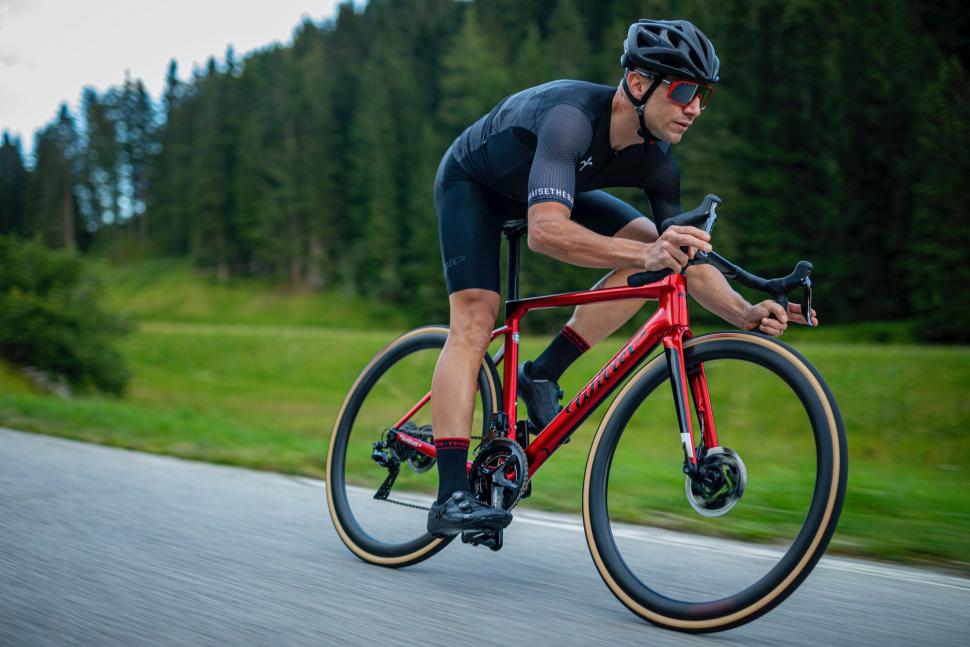 2021 Wilier Filante SLR - 15.jpeg
2021 Wilier Filante SLR - 15.jpegWilier claims big aero savings for 2021 Filante SLR
Wilier has unveiled a new top-end road bike called Filante SLR that’s designed with “real world aerodynamics” in mind. It’s a disc brake bike for electronic groupsets only, with the hoses and wires routed internally, and Wilier claims a frame weight of just 870g.
If you’re short of time:
• Aero road bike with disc brakes, designed for electronic shifting only
• Truncated NACA airfoil tube profiles with a more rounded cutoff than usual
• Claimed frame weight is 870g, claimed fork weight is 360g
• Fully internal cable routing
• HUS-Mod carbon and liquid crystal polymer construction designed to reduce vibration
Aerodynamics
Wilier uses truncated NACA (National Advisory Committee for Aeronatics) airfoils as the basis for Filante SLR’s tube profiles, as it did for Cento10Pro, its existing top-level aero road bike. The difference, though, is in the cutoff at the rear of the tube.
“We revised the aerodynamics in the real world,” says Wilier’s R&D technical manager Claudio Salomoni. “Obviously, we developed Filante in the wind tunnel – you can't avoid using it. However the wind tunnel has limits.
“The wind is very clean. This is good because of course the data must be consistent… but we know that things are different in the real world. The wind comes from different directions; there are so many more problems than those tested in the wind tunnel.
"We have the movement of the cyclist moving forward, we have crosswinds that change when you go around a curve, then when you’re in the middle of the peloton the other cyclists create turbulence, so the real world is very different from the clean wind tunnel.
“We still use NACA airfoils… but unlike previous frames, this cut was softened. It doesn’t have the sharp edges of the Cento10Pro. The design is much more rounded.
“This is a great help in the real world because the boundary layer – the wind particles closest to the frame – adhere more to the profile than on the Cento10Pro. As we change the yaw angle, the frame maintains its good aerodynamic characteristics.”
Yaw angle is the result of the bike/cyclist’s direction and speed, and the wind angle and speed. Wilier tested the Filante SLR at yaw angles from +20° to -20° yaw and says that the new design results in ‘significant’ aero improvements in real world situations, although it doesn’t offer any figures comparing the new bike with the Cento10Pro or rivals from other brands.
Wilier has used wide fork legs on previous models as a means of reducing turbulence and thereby improving the overall aero performance, and it has gone further than ever on its new bike.
“The Filante SLR’s fork legs are 7mm wider than those of the Cento10Pro, and that’s quite a difference,” says Claudio Salomoni.
“We also worked on the design at the back. If you look at the bike straight on you’ll see that the very wide rear triangle is hidden perfectly by the design of the fork. This is also a little trick that gives us an exceptionally low CX [drag coefficient].”
Weight
Wilier says that the more rounded profile at the rear of the tube profile also keeps the weight down.
“Compared with a sharp corner design, we need less material and above all we have perfect control over the resin,” says Claudio Salomoni. “Removing excess resin is the key to a lightweight frame.”
Filante SLR is made from the same materials as the Zero SLR: HUS-Mod carbon fibre and liquid crystal polymer. When the Zero SLR was launched, Wilier told us that HUS-Mod was a blend of “the highest quality fibres” and that the liquid crystal polymer helped improve the absorption of vibration. That’s about all the info we’ve been able to get out of them! The details are secret, we’re told, and can't be shared for commercial reasons.
Wilier claims that the Filante SLR’s frame weighs 870g, which is just 90g more than the Zero SLR, the lightweight road bike in the Italian brand’s range. The fork has a claimed weight of 360g, 20g more than the Zero SLR’s.
Read about our first ride on the Wilier Zero SLR
The Filante is said to weigh 11% less than the Cento10Pro while remaining very stiff, so the stiffness-to-weight ratio is higher.
Internal cabling
The brake hoses and shift wires (if there are any) are fully internal, running through a monocoque handlebar/stem and into the frame.
Hitting the scales at a claimed 365g, the new Filante bar is about 50-60g lighter than Wilier’s first monocoque bar, the Alabarda, introduced back in 2016. It’s also said to be stiffer. The stem section is designed to sit level with the ground to minimise the frontal area.
Wilier has used a D-shaped fork steerer profile in recent years to allow space for hoses/cables to run internally, but it reverts to a round tube with the Filante, which helps with stiffness. Wilier has patented its own new bearing design that allows the hoses/wires to pass through.
The head tube still takes 1 1/4in bearings, which is unusual for a bike with fully internal cables, helping to improve the aero performance.
Sizing
The Filante is available in six different frame sizes and Wilier says that the ride characteristics are the same across the board.
“Every frame has different tube sizes,” says Claudio Salomoni. “The different dimensions allow the same performance on both very large and very small frames. The stiffness, fluidity and quality of the ride are replicated across the range of sizes.”
There are also five different handlebar sizes (the stem sections are unusual lengths: 88mm, 101mm, 114mm, 127mm and 140mm) and 35mm of headset spacers (so you get the choice of running 0mm, 5mm, 10mm, 15mm, 20mm, 25mm, 30mm, and 35mm – eight different options). Multiply that lot up (six frame sizes, five handlebar options, eight spacer heights) and you get 240 different fit combinations (some weirder than others, admittedly).
The idea of those unusual stem section lengths is that no fit sizes overlap and that one position is never more than 3mm away from the next.
The seatpost is available in both an inline version and with 15mm of setback (the position of the clamp in relation to the centre of the post), offering another possibility for altering your ride position.
The Filante is available in three different colours: velvet red, iridescent grey, and matt black.
As mentioned up top, the Filante is disc brake only (there’s no rim brake version) and takes only electronic drivetrains.
These models are available:
| Groupset | Wheels | Price |
|---|---|---|
| Campagnolo Super Record EPS | Campag Bora WTO 33 Disc Dark | £11,160 |
| Campagnolo Super Record EPS | Campag Shamal Carbon C21 | £10,080 |
| Shimano Dura-Ace Di2 | Wilier ULT38KT/Ceramic Speed | £10,170 |
| Shimano Dura-Ace Di2 | Wilier SLR 42 KC Carbon | £9,270 |
| Shimano Ultegra Di2 | Wilier SLR 42 KC Carbon | £7,380 |
| Shimano Ultegra Di2 | Shimano RS170 | £6,480 |
| SRAM Red eTap AXS 2x12 XDR | Wilier ULT38KT/Ceramic Speed | £10,260 |
| SRAM Red eTap AXS 2x12 XDR | Wilier SLR 42 KC carbon | £9,360 |
| SRAM Force eTap AXS 2x12 power meter | Wilier SLR 42 KC carbon | £8,100 |
| SRAM Force eTap AXS 2x12 | Wilier SLR 42 KC carbon | £7,470 |
| SRAM Force eTap AXS 2x12 Wide | Wilier SLR 42 KC carbon | £7,470 |
Mat has been in cycling media since 1996, on titles including BikeRadar, Total Bike, Total Mountain Bike, What Mountain Bike and Mountain Biking UK, and he has been editor of 220 Triathlon and Cycling Plus. Mat has been road.cc technical editor for over a decade, testing bikes, fettling the latest kit, and trying out the most up-to-the-minute clothing. He has won his category in Ironman UK 70.3 and finished on the podium in both marathons he has run. Mat is a Cambridge graduate who did a post-grad in magazine journalism, and he is a winner of the Cycling Media Award for Specialist Online Writer. Now over 50, he's riding road and gravel bikes most days for fun and fitness rather than training for competitions.
Latest Comments
- Oldfatgit 9 min 10 sec ago
Thank you for asking Aidan, much appreciated....
- Aluminium can 5 hours 59 min ago
While I always have lights on day and night and wear fluro, I have a friend that wears all black all the time and doesn't use lights ever. His...
- eburtthebike 8 hours 3 min ago
A sad case, and one with no winners. The driver can thank her lucky stars that the cyclist wasn't more seriously injured and that the court was...
- ktache 9 hours 8 min ago
And I liked endura too. Got a nice long sleeve mostly merino long sleeve a little while back, in orange.
- matthewn5 9 hours 36 min ago
No, the Ebay lights have been around for several years, this Lezyne light just appeared.
- chrisonabike 9 hours 52 min ago
They shouldn't worry - the second part of the "tariff" refrain is "they can make it in US and they'll do very well".
- Mr Blackbird 10 hours 24 min ago
"At the going down of the sun, it will get in our eyes and cause us to crash into things."
- Rendel Harris 10 hours 32 min ago
Been living in the area thirty years now and Brixton Cycles (and local riders wearing their famed Rastafarian colours jersey) has been an iconic...
- chrisonabike 15 hours 28 min ago
Indeed - but again these are perhaps questions we should keep asking. Even if the immediate answer is "well we are where we are" or "how on earth...

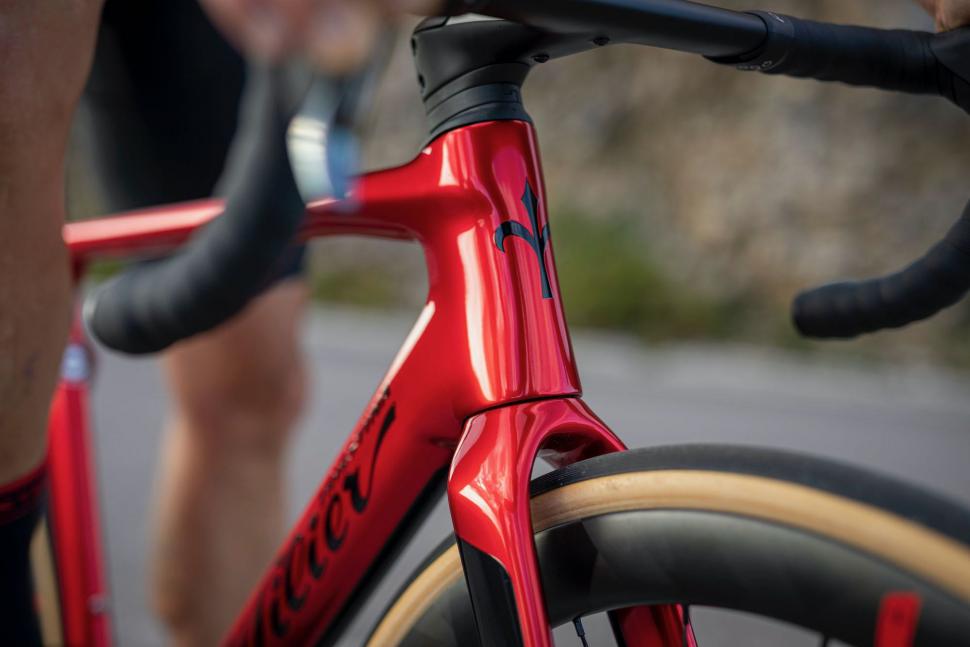
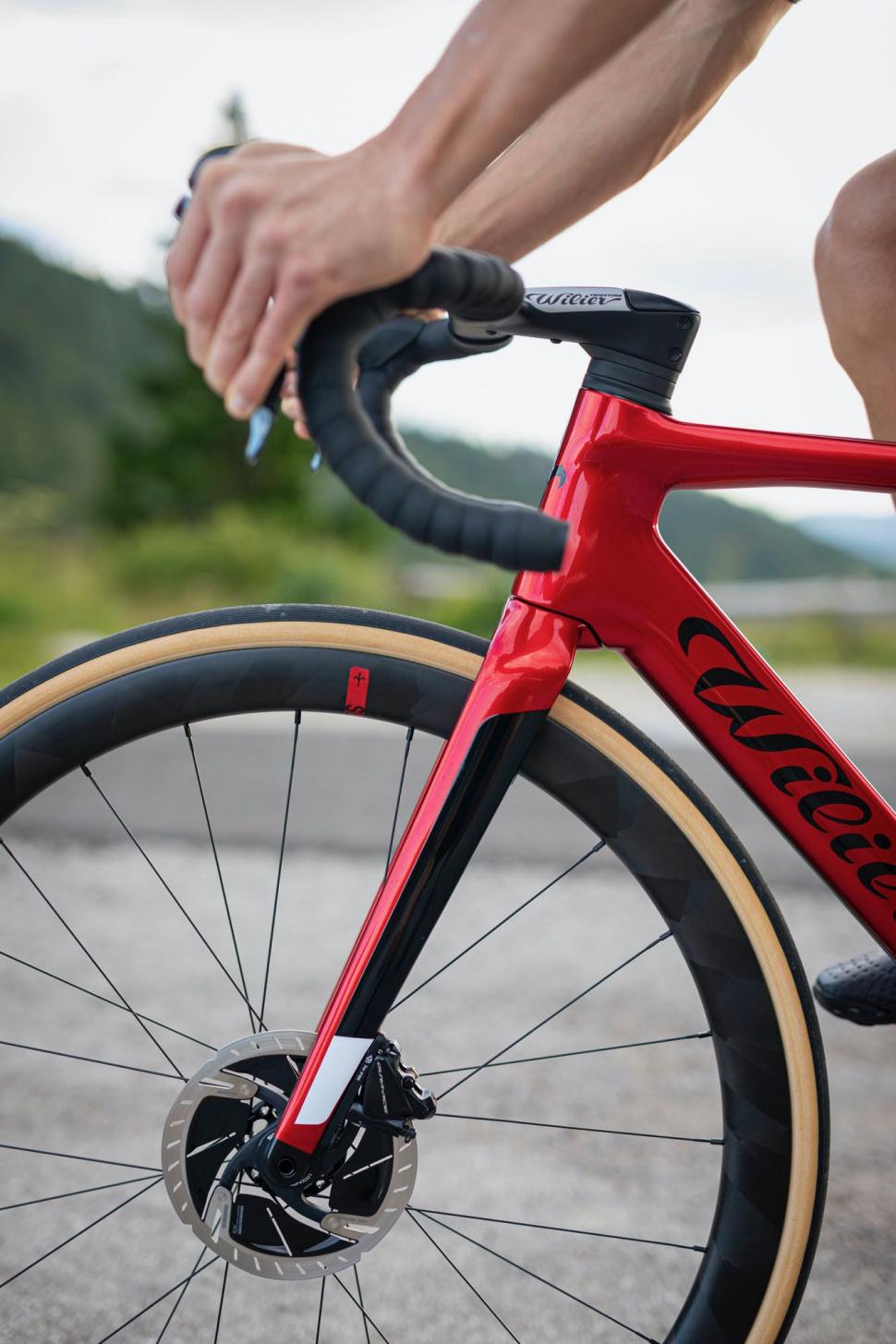
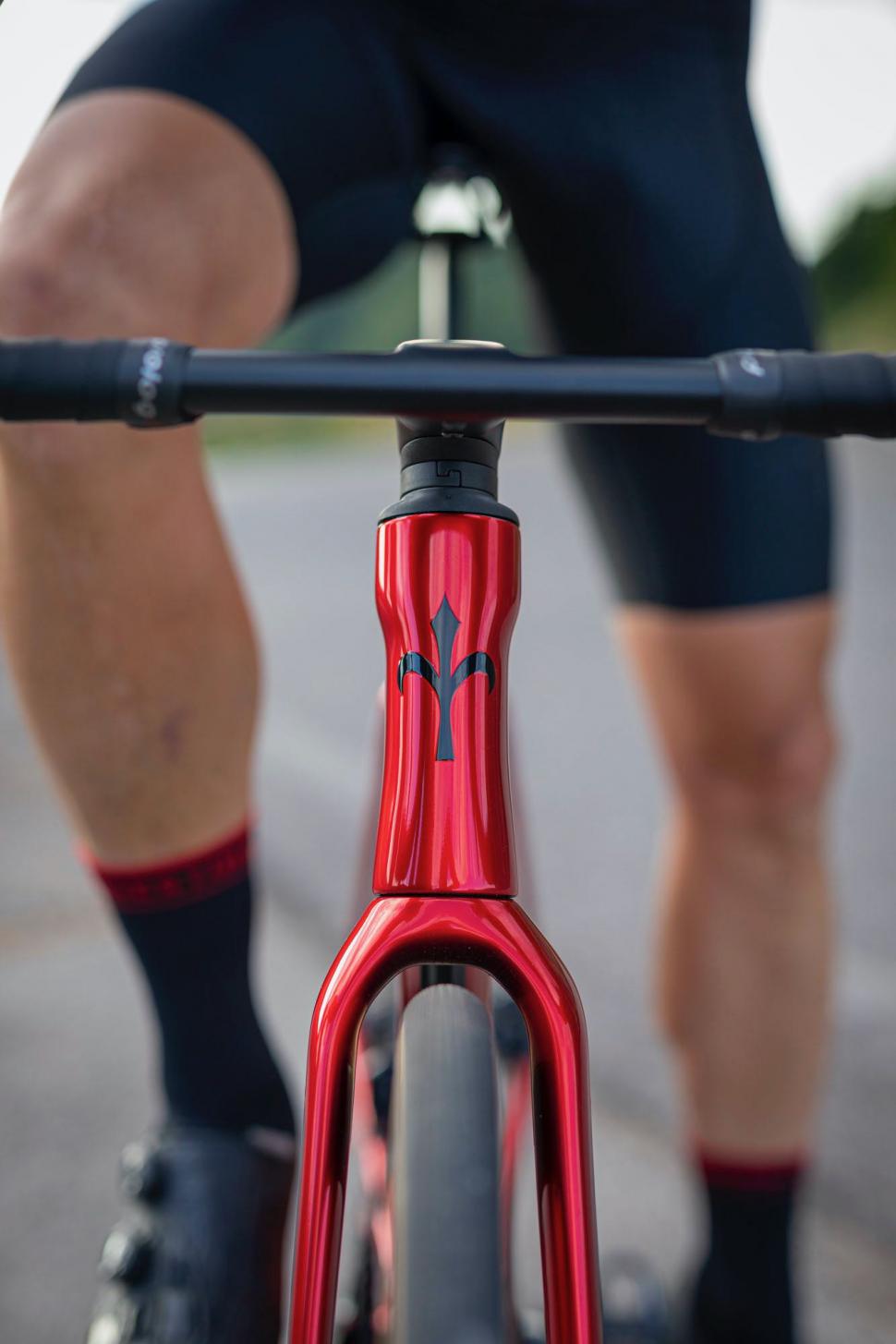
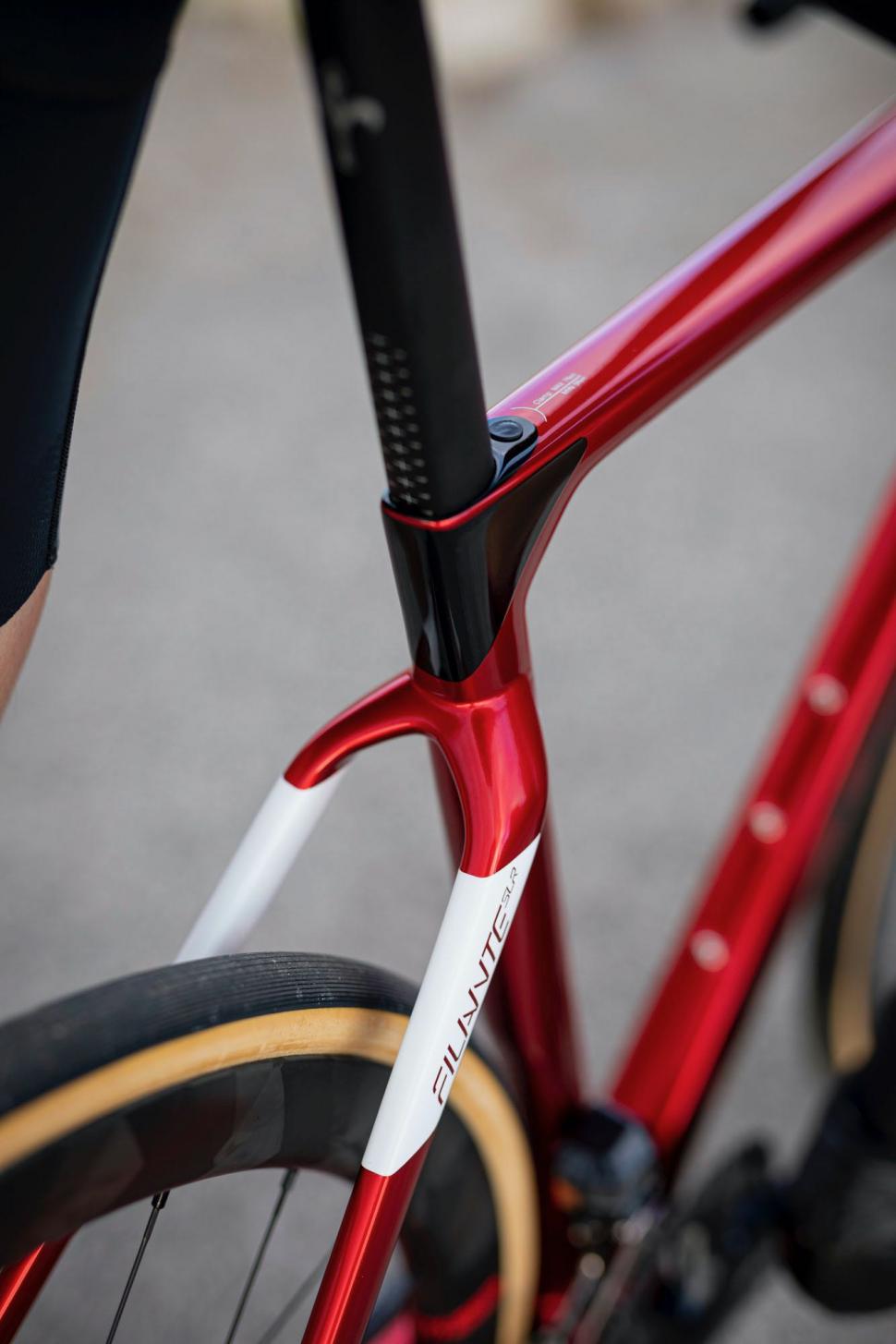
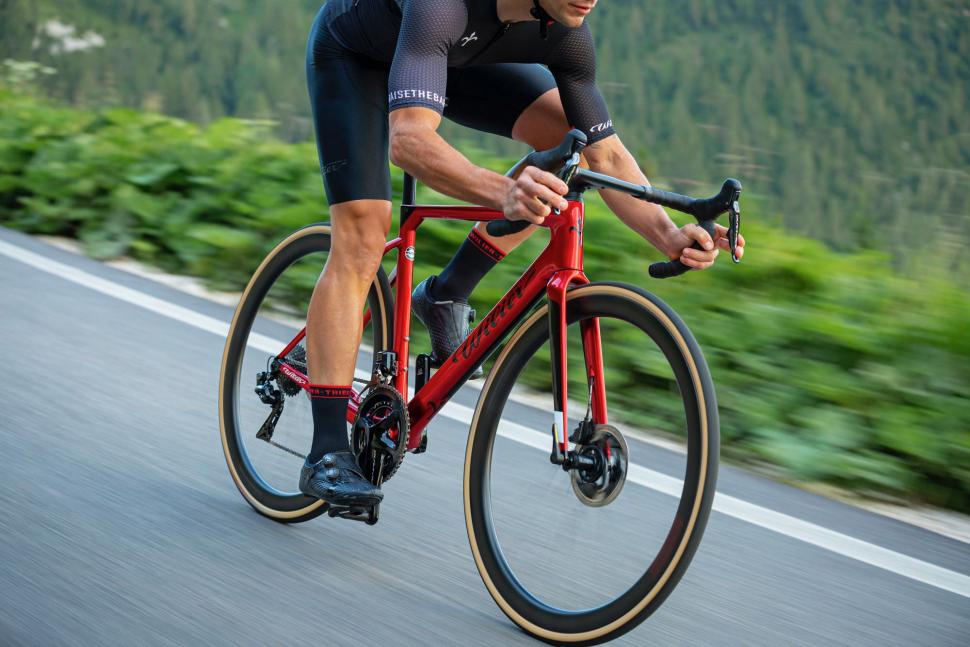
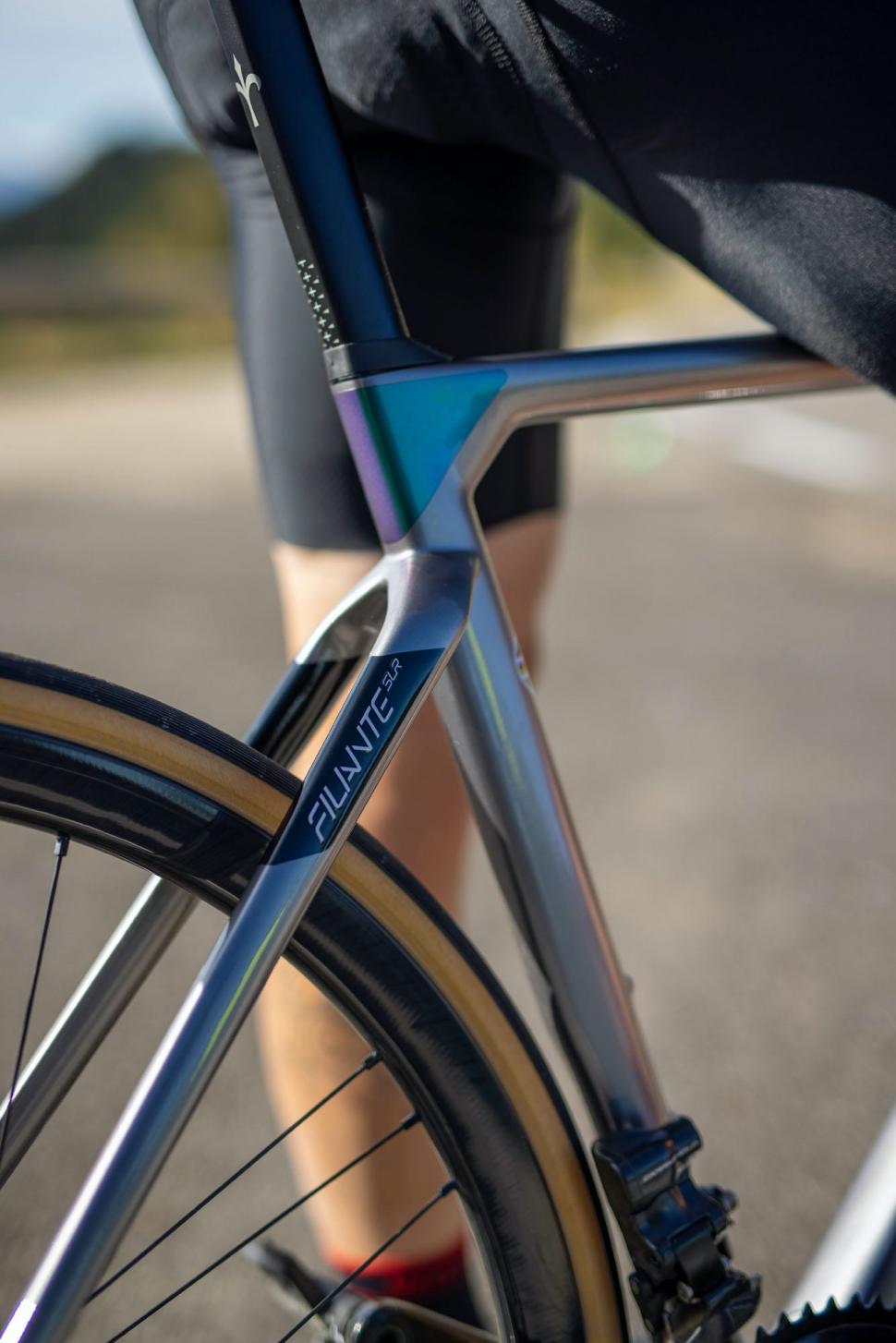
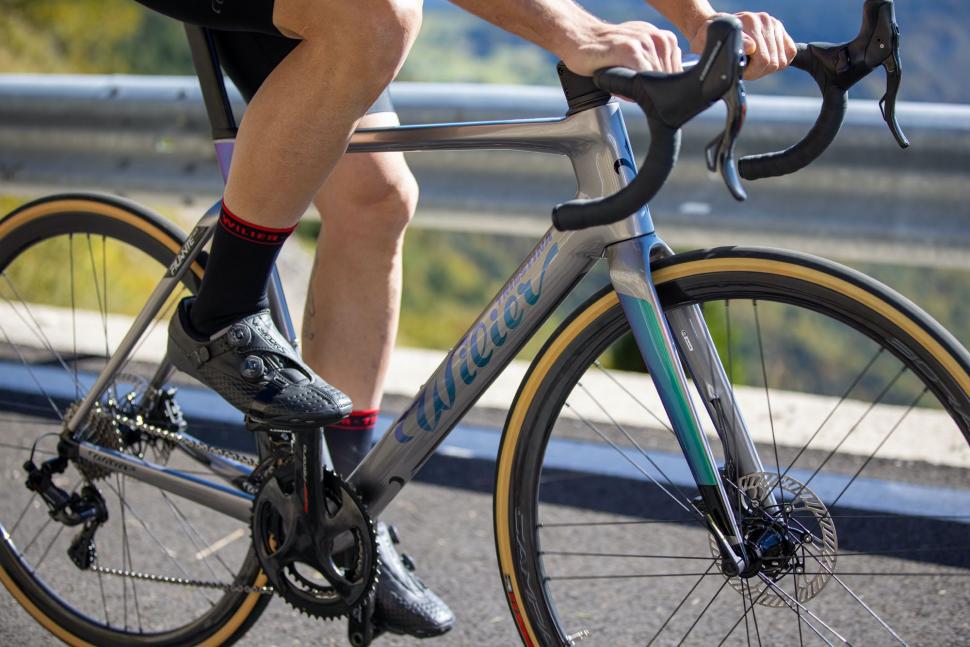
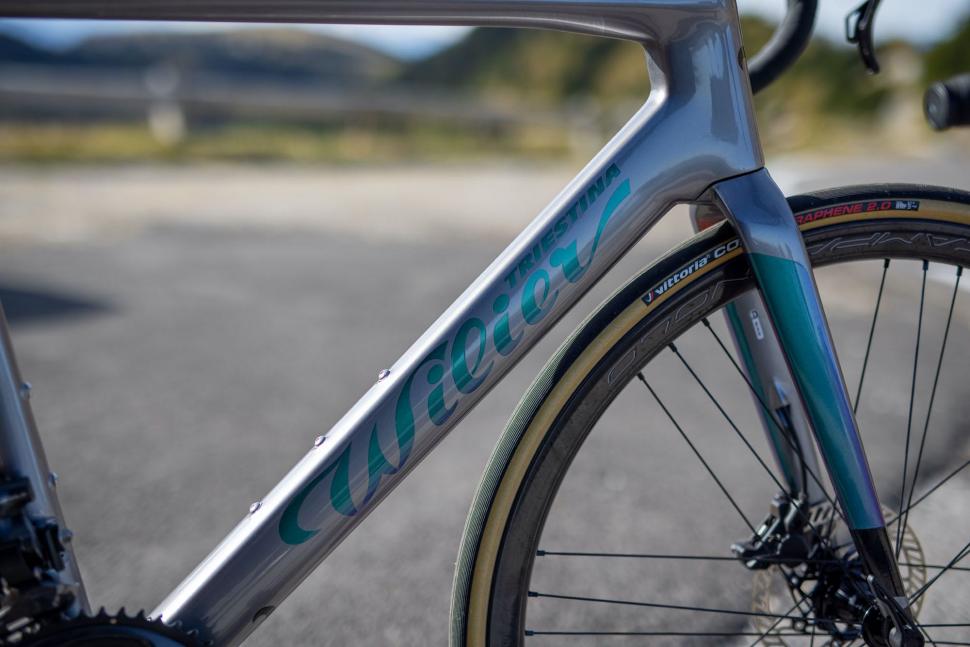
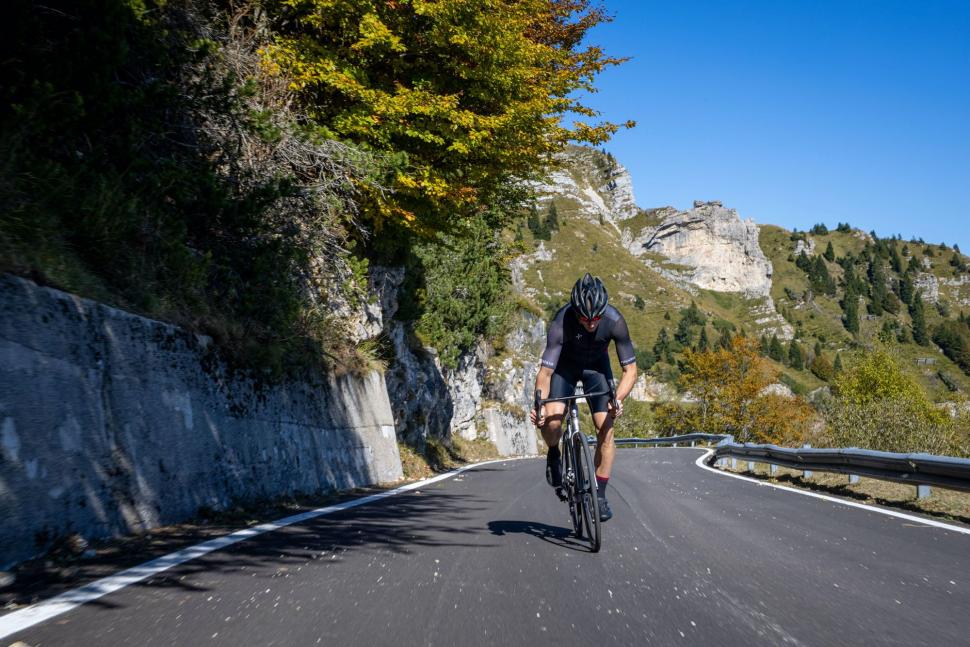
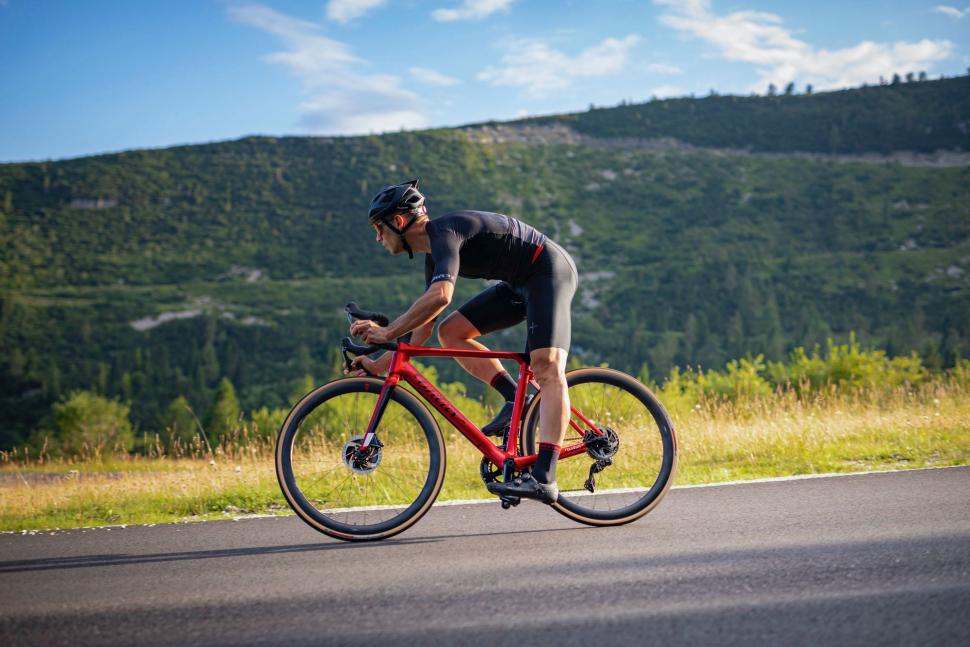























Add new comment
9 comments
Another very nice looking bike from Wilier...shame there's no copper version. I was interested to learn that they use different tube diametres for different frame sizes - first I've heard of that - and I wish someone would apply it to kids bikes.
Just bought my son (8) his first race bike and considered Frog, Isla, and Wiggins (he chose Wiggins), but was astounded to learn that the 'lightweight' ones come in at a 'competitive' 9.2 kg - about 1.5kg heavier than mine. Fine, he can toughen up - and so could I for that matter - but is it really the case that 8-year old's bikes cannot be build less than 9kg? It's a third of his bodyweight.
Imma double out - Aero road bike with disc brakes, designed for electronic shifting only
No denying that is a fine looking bicycle, but when manufacturers are claiming significant aero improvements, stiffness and handling, one does wonder how they managed to get the previous model (which no doubt was touted at the time as being utterly fabulous) so wrong.
New and improved! Just imagine, all this time we've been riding old ad inferior....
One major bike maker (Cannondale, if memory serves) was in the habit of claiming they'd shaved xxxg off their top-end frame every year, until someone added up the reductions for the last several years and pointed out the frame should now be lighter than air.
Love that red colour with the tan sidewall tyres. I could see me cruising around the Italian countryside on this (when I win some money!). At the moment I have one of those new-fangled, round tubed, steel bikes
Yes there's a load of marketing guff in there, but I do like those seatstays.
“We still use NACA airfoils… but unlike previous frames, this cut was softened. It doesn’t have the sharp edges of the Cento10Pro. The design is much more rounded."
Round tubes on a bike ! What is this witchcraft ? Is there no end to this... we'll be riding skinny, steel frames before you know it !
Aethos almost gets you there